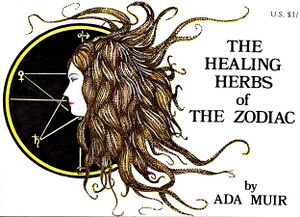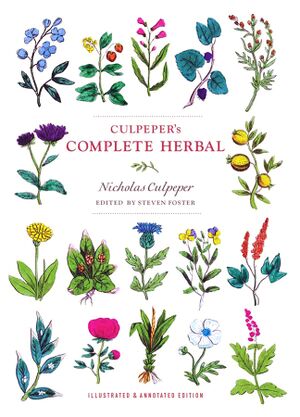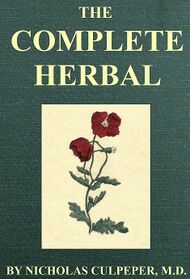Medical Astrology
General
A branch of astrology concerned with the relationship between the horoscope and the physical body, particularly its relationship to illness and dispositions, but also with regard to its potential to reveal methods of healing. Medical astrology is based on the idea that the planets, signs, and houses are related to the organs and parts of the physical body. For example, Aries and the First House rule the head, and Pisces and the Twelfth House rule the feet. Neptune, because of its illusory nature, rules both drug addiction and illnesses that are difficult to diagnose.
The Sixth House indicates the person's state of health in a general way, and the first house represents the physical body. If someone suffers from backache, however, it is helpful to know that Leo rules the back and Saturn rules the bones, especially the spine.
Today modern psychological astrologers might try to work with a client to heal illnesses with a psychosomatic component, whereas others might recommend specific herbs or mineral supplements ruled by a particular planet to balance afflicted areas in the horoscope.
The practice of medical astrology requires profound medical knowledge, and is not a substitute for the care of a licensed medical doctor. In the hands of a skilled practitioner it may compliment the physician's care or provide some relief in cases that standard medical practices did not diagnose or heal.
Decumbiture Chart[1]
In astrology a decumbiture chart is an inception chart that is cast for the moment that a person lays down or takes to their bed as a result of becoming ill.
The decumbiture chart is essentially an inception or commencement chart for the illness itself, and it is used in medical astrology in order to determine information about the nature and course of the illness.
Before the advent of modern medicine, doctors and herbalists studied astrology as their principal diagnostic tool. Physician-astrologers would look at the patient's nativity but also cast a decumbiture chart: an event chart for the moment the patient took to bed. Today other useful event charts might be cast for the time of the onset of an illness or injury, as well as scheduling an optimum time for elective surgery.
The practice is apparently very old, dating back to the early Hellenistic tradition. It was especially used in late Medieval and Renaissance Europe when most doctors had some training in astrology, in order to help diagnose and treat patients.
The term is derived from the Latin word decumbo, which means “to lie down” or “to fall down”.
The use of this term by the Latin authors is probably in imitation of the use of the word kataklisis (κατάκλισις) to refer to the same concept in Greek astrological texts. Kataklisis also means “to lie down” or “take to one’s bed”.
See also
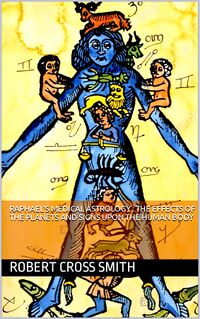
Weblinks
- Wikipedia: Medical astrology
- Wikipedia: Zodiac Man
- Category:Homo signorum (illustrations wikimedia commons)
- Decumbiture Chart (Chris Brennan's Astrology Dictionary)
- Luminarium: Encyclopedia Project
- The Zodiac in Your Health Horoscope (Stefan Stenudd)
- An Introduction to Decumbiture (Dylan Warren-Davis 2006)
- Ivy Goldstein-Jacobson's Sick Boy Horary (Maggie Hyde, 1995/ 2005)
- Astrological Physiognomy from Ptolemy to the Present Day (Bernard Eccles, 2002)
- Nicholas Culpeper: The Complete Herbal (EBook, Project Gutenberg)
- Picking Your Remedies by the Stars (greekmedicine.net)
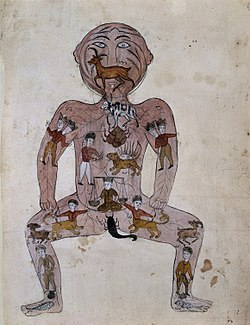

Bibliography
- Medical astrology was mentioned by Marcus Manilius (1st century AD) in his epic poem (8000 verses) Astronomica
- Marsilio Ficino, Three Books on Life (De vita libri tres, 1489) translated by Carol V. Kaske and John R. Clark, ISBN 0-86698-041-5
- Nicholas Culpepper, Astrological Judgement of Diseases from the Decumbiture of the Sick (1655) ISBN 1-5381-0113-0
- Dorian Gieseler Greenbaum, Handbook of Archaeoastronomy and Ethnoastronomy, 2015, ISBN 978-1-4614-6140-1
- Pages 117–132 cover the topic of astronomy, astrology, and medicine from the Old Babylonian period to the Enlightenment
- Ridder-Patrick, Jane. 1990. A Handbook of Medical Astrology, 2nd. ed., CrabApple Press
- Nauman, Eileen. 1993. Medical Astrology, Blue Turtle Publishing
- Warren-Davies, Dylan. 2000. Astrology and Health: A Beginner's Guide, 2nd ed. Hodder & Stoughton
- Ada Muir: An Astrological Guide to Heal Yourself: Herbs, Health Foods and Your Zodiac. 177 pages. New Age Books/ MLBD, 2007 ISBN 978-8178222301
- Nicholas Culpeper: Semeiotica Uranica: Or an Astrological judgment of diseases from the decumbiture of the sick; 1. From Aven Ezra by way of introduction. 2. From Noel Duret by way of direction. Wherein is layd down, the way and manner of finding out the cause, change and end of a disease. 190 pages. Nathaniell Brooke, London 1651; edition 1655 (includes Ibn Ezra's Critical days); new edition at Kessinger Publishing, 2004 ISBN 978-0766185784
- Wanda Sellar: Introduction to Medical Astrology. Wessex Astrologer, 2008, 236 Pages. ISBN 9781902405322 Review online (Deborah Houlding, 2009)
Notes and References
- ↑ From Chris Brennan's Astrology Dictionary
- ↑ The Effects of the Planets and Signs Upon the Human Body
- ↑ Watercolour painting. Annotations on the image. Diagram in a Persian MSS of the Zakhira-i Khvarazm Shahi of al-Jurjani and Tashrih-i Mansuri of Mansur
- ↑ A diagram of a human body and astrological symbols with instructions explaining the importance of astrology from a medical perspective. From a 15th-century Welsh manuscript. Page 26 of a manuscript written mostly by Gutun Owain in the late 1400s. The diagram on this page is referred to as "The Zodiac Man". This part of the manuscript contains an assortment of texts about astrology and medicine. This combination was common in manuscripts all over Europe by the fifteenth century.
